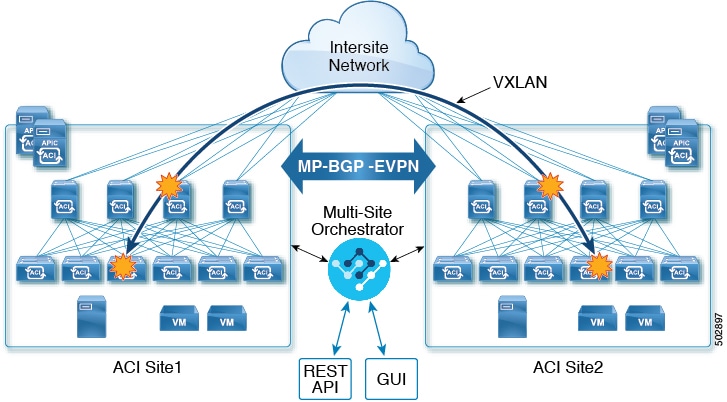SR-MPLS and Multi-Site
Starting with Orchestrator Release 3.0(1) and APIC Release 5.0(1), the Multi-Site architecture supports APIC sites connected via MPLS networks.
In a typical Multi-Site deployment, traffic between sites is forwarded over an intersite network (ISN) via VXLAN encapsulation:

With Release 3.0(1), MPLS network can be used in addition to or instead of the ISN allowing inter-site communication via WAN:

The following sections describe guidelines, limitations, and configurations specific to managing Schemas that are deployed to these sites from the Multi-Site Orchestrator. Detailed information about MPLS hand off, supported individual site topologies (such as remote leaf support), and policy model is available in the Cisco APIC Layer 3 Networking Configuration Guide.


 Feedback
Feedback